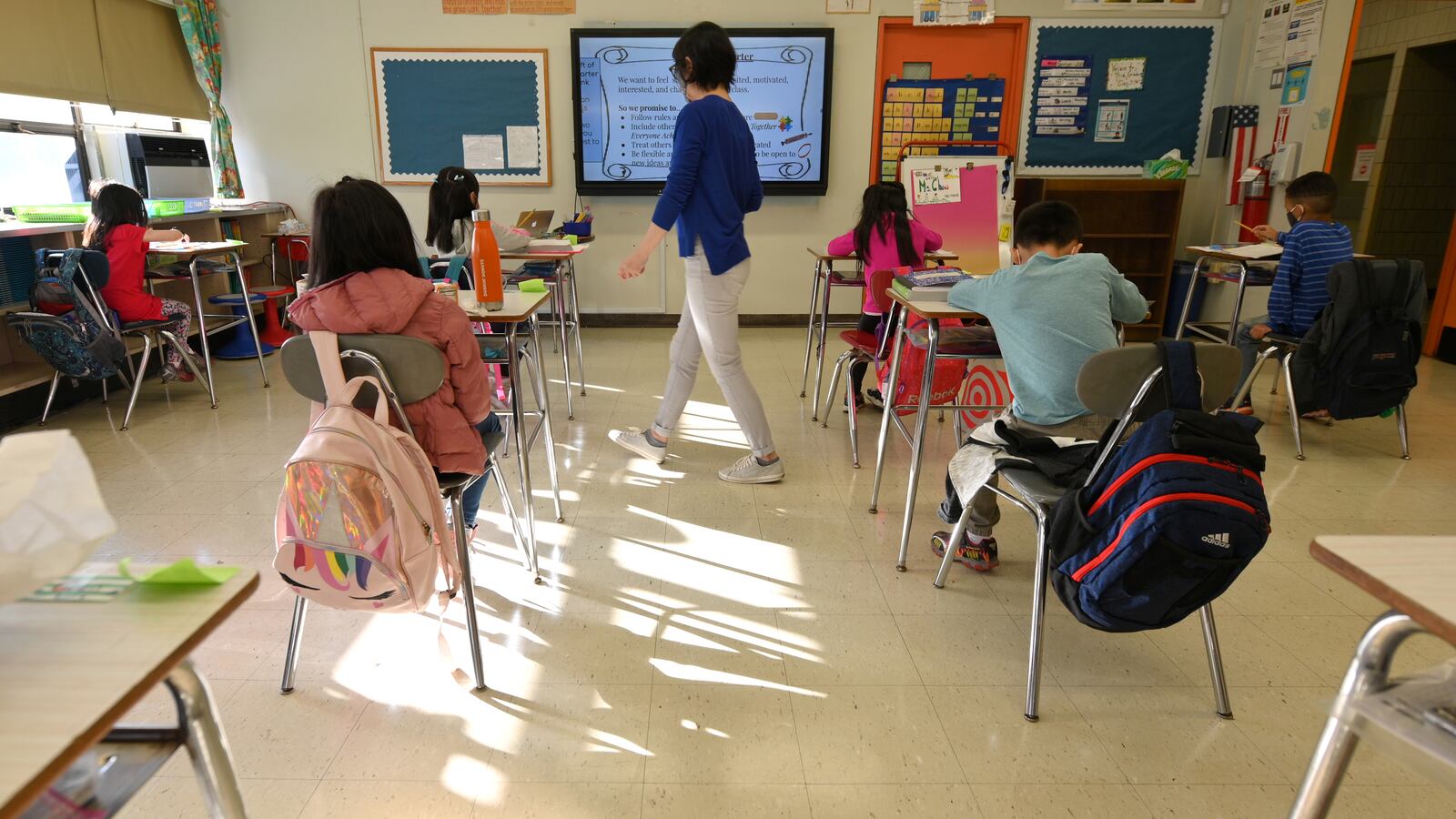Though the next mayor won’t take office until midway into the next school year, his or her policies will surely shape what is a consequential time for New York City’s nearly 1 million public school students.
We’ve compiled what we know about the Democratic mayoral candidates’ ideas and plans for city schools based on their education platforms and track records. (The Democratic primary winner is favored to ascend to City Hall.)
We have a separate voter guide on early education, child care and after school, and a roundup of the candidates’ specific visions on how to help schools recover from more than a year of disrupted learning during the pandemic.
Early voting begins June 12 and runs through June 20, and Primary Day is on June 22. (Candidates are listed below in the order that their names will appear on the ballot, which was chosen by lottery.)
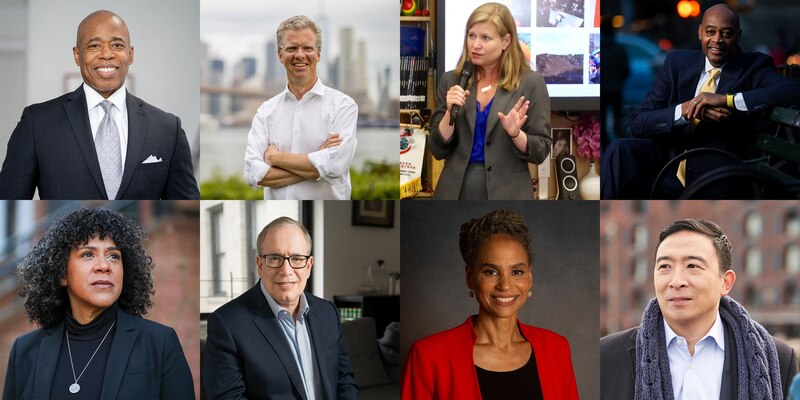
Jump to the topics we covered: Big education idea, Charter Schools, Specialized High School Admissions Test and Gifted and Talented programs, Police in schools, Integration efforts, Plan for English Language Learners, Plan for students with disabilities, Plan for students in temporary housing
Big education idea
For Bill de Blasio, universal pre-K was his signature education policy. Here are some of the bold visions from the mayoral contenders.
Dianne Morales, former nonprofit executive
A former NYC public school teacher, Morales has made tackling segregation a central part of her education agenda. She would remove screens from all schools, and in her first 100 days, she would sign an executive order to “desegregate schools, eliminate disparities, and hold agencies accountable for inequitable educational outcomes,” according to her website. She would also cap class sizes to 18 students in elementary schools and 22 students in middle and high schools.
Scott Stringer, NYC comptroller
From kindergarten through fifth grade, Stringer wants to have two teachers in every classroom, a lead teacher and an assistant teacher at minimum, according to his plan, “From Pandemic to Progress.” Wealthier public schools often fundraise to have an assistant teacher, particularly in the younger grades. Stringer believes that increasing the number of adults in the room will bolster personalized support that children may need because of COVID learning disruptions.
Ray McGuire, former Citigroup vice chair
Ensuring all students are reading on grade level by third grade is a key priority for McGuire. (This was also a pillar of Mayor Bill de Blasio’s education agenda.) As part of McGuire’s Tutor NYC program, the city would train 10,000 recent college graduates to work with students part time during the school year and over the summer to improve reading. Tutors would be offered to families whose children are behind in their reading assessments during first grade and beyond. McGuire would also have the education department train parents and guardians to support their children in learning to read.
Maya Wiley, civil rights lawyer
Reducing class sizes is a priority in Wiley’s plan to “create a just and vibrant school system.” Wiley would allocate $250 million to hire 2,500 new teachers. She believes smaller classes are the key to helping students with academic and social-emotional challenges resulting from the past year. The funding would come from federal stimulus packages as well as promised state dollars.
Kathryn Garcia, former NYC sanitation commissioner
Garcia’s plan calls for moving $130 million out of the education department’s administrative funds directly into principals’ school budgets for teachers and supplies, prioritizing the 140 schools where homeless students comprise 20% or more of the total enrollment. She would also implement universal broadband across the city and a “Virtual Excellence” center at the education department, which would offer rigorous courses online, including Advanced Placement classes.
Eric Adams, Brooklyn borough president
To reduce education inequalities, Adams’ plan calls for keeping school buildings open year-round, providing child care and STEAM (science, technology, engineering, arts, and mathematics) programming during the summer. Adams would also create a long-term remote learning option, funded by levying a Data Tax on big tech companies that sell private data to advertisers and others. The Data Tax would help pay for a unit of remote learning experts who would oversee the program.
Shaun Donovan, former U.S. Secretary of Housing and Urban Development
To help students and educators recover from the academic and social-emotional impacts of COVID, Donovan would create an Education Recovery Corps. The program, funded through federal AmeriCorps dollars, would employ CUNY students and graduates to support elementary and secondary school students. The education department would also develop a systematic approach to supporting homeless students as well as those in foster care, in part by hiring 150 new social workers.
Andrew Yang, entrepreneur
Through an initiative called “The Big Apple Corps,” Yang would mobilize 10,000 recent college graduates to serve as tutors for the 100,000 most vulnerable students who were hardest hit by the COVID pandemic, starting with Title I schools. The Big Apple Corps would also provide enrichment opportunities and social-emotional support for students facing trauma and loss during COVID. Funding for the program would come from the federal AmeriCorps program, and Yang’s administration would ensure that participants earn a liveable wage during their year of service. Yang has emphasized that the program would help create jobs as well as an NYC teacher pipeline.
Charter Schools
Charter schools, often a political lightning rod, serve roughly 140,000 NYC students.
Dianne Morales
Morales’ position on charter schools flip-flopped: As recently as last year, she indicated her support for “school-choice,’’ a term charter school advocates identify with, but on the campaign trail, she has brought a skeptical eye towards the charter sector. Her platform advocates for ending the co-location of charter schools in public school buildings and preventing recruitment data from being accessible to charter schools without parental consent. She favors New York City’s charter school cap, which the state legislature sets and has already been reached.
Scott Stringer
Stringer, whom the United Federation of Teachers endorsed, has consistently criticized charter schools. As comptroller, Stringer previously sought to audit charter schools even after a judge said they are exempt from financial regulation.
Ray McGuire
McGuire would like to expand the number of charter schools by lifting the charter school cap, similar to Garcia. “We need to lift the cap immediately so that every neighborhood has a choice of good schools,” he said at a candidate forum in March.
Maya Wiley
Wiley’s education platform mentions charters only once, in the context of simplifying the admissions so that each school would have the same application process, including charters. The de Blasio administration, which Wiley worked for, did briefly consider a universal application process, though it was quickly scrapped.
Kathryn Garcia
Garcia supports lifting the cap on New York City charters. “Because you’re a charter school does not mean that I think you’re being selfish,” she said at a candidate forum for charter school parents in May. “It’s become too political, like you’re not pure enough on this or that. I just don’t feel that way.”
Eric Adams
Charter schools are not a central component of Adams’ education plan, though he has indicated on multiple occasions that he supports them. He favors keeping the cap on charters, and he has said successful charters should be duplicated and failing ones shut down. He also said he supports unionizing charters.
Shaun Donovan
Donovan has said that he would advocate for more charter schools under “stricter conditions” than those currently in place. He said he would consider lobbying to lift the cap to increase the number of “high quality” charter schools but was vague on details.
Andrew Yang
Yang supports lifting the state cap on charter schools. “Andrew believes that we should free-up zombie charters [state-approved charters that closed or never opened] and geographical restrictions, while engaging with legislators in Albany to ensure parental demand for additional charters is met,” his platform states.
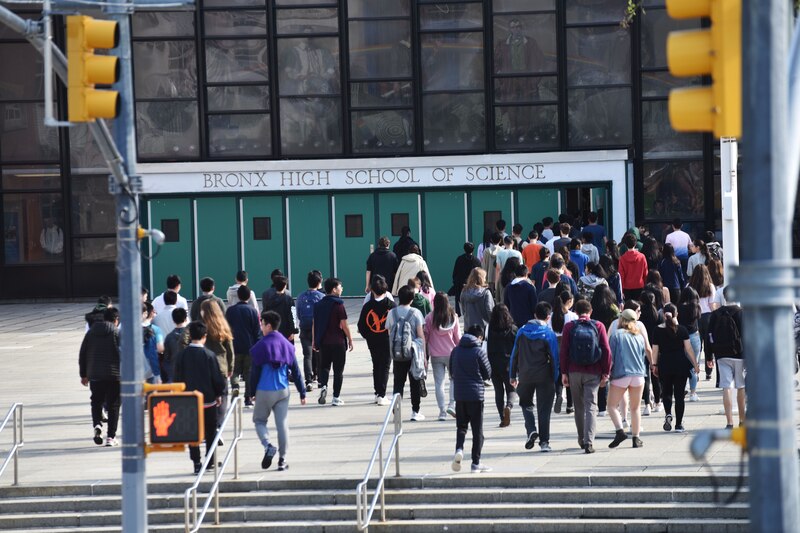
Specialized High School Admissions Test and Gifted and Talented programs
One of the most heated debates in the NYC education world revolves around the SHSAT, an exam that is the sole admission criteria for eight of the city’s specialized high schools, and the city’s gifted and talented, or G&T, programs, serving roughly 16,000 elementary school students based on a test given to 4-year-olds. White and Asian students make up the majority of both programs, even though the city’s school system is majority Black and Latino.
Dianne Morales
Morales would eliminate all screens, including the SHSAT and G&T, to desegregate schools.
Scott Stringer
Stringer advocates for removing the SHSAT and instead determining admissions to the city’s specialized high schools based on state math and reading scores. He would also like to explore apportioning a percentage of seats to top performers in individual districts or schools. He would delay the start of the gifted and talented programs, removing testing of 4-year-olds. By putting two teachers in each classroom, he would also broaden access to individualized instruction.
Ray McGuire
McGuire, a former Wall Street executive, has not explicitly said whether he would seek to eliminate the SHSAT, but he did indicate that the test should not be the sole criterion for admission to specialized high schools. He believes that factors such as grades, recommendations, and essays should also be considered. McGuire said he would increase the number of G&T classrooms, specifically in under-represented districts. He tweeted that in place of the G&T test, he would institute “a multi-pronged admissions process that removes the current inequities in access and preparation.”
Maya Wiley
Wiley would like to eliminate the SHSAT and replace the current model for gifted and talented, which separates students into their own classrooms, with other approaches that serve more students. “The research shows that all students benefit from an education that provides strengths-based, culturally relevant enrichment, not just those who can pass a standardized test at the age of four,” states her platform. She prefers the school-wide enrichment model that tends to offer project-based learning to all students.
Kathryn Garcia
Garcia would not eliminate the SHSAT; instead, she would open up new high schools in each borough that would admit students in the top 10% of each eighth grade graduating class. Garcia supports eliminating G&T testing for incoming kindergarteners while expanding the programming for other grade levels.
Eric Adams
Adams has said that he would not remove the SHSAT or G&T testing. He said the state must determine the fate of the SHSAT, which is mandated by the Hecht-Calandra law, and that he would add more selective high schools as well as more G&T testing to help low-income areas.
Shaun Donovan
Donovan’s platform does not specifically address the SHSAT, but it does call for reforming and improving the high school admissions system so that entrance criteria are fair and transparent. Donovan would revise the admission criteria that have a discriminatory impact, and he wants to create uniformity in the usage of screens “so families do not have to sift through a confusing hodgepodge of individualized rubrics.”
Andrew Yang
Yang would keep the SHSAT as well as gifted and talented programs. He would, however, advocate expanding the admissions criteria at selective high schools to include interviews, recommendations, grades, and written work in addition to the state-mandated SHSAT. He would also create at least one more new specialized high school for each borough.
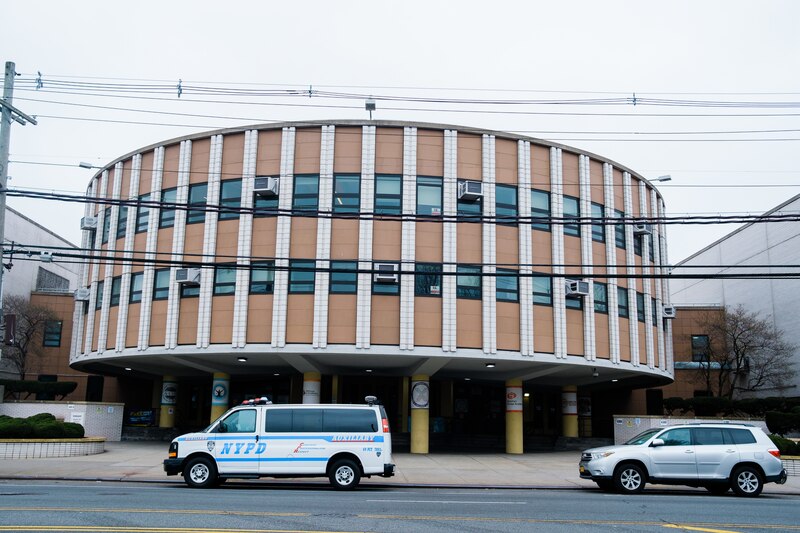
Police in schools
New York City trails behind some other school districts in rethinking its approach to police in schools, though de Blasio promised to transfer oversight of school safety agents from the NYPD to the education department.
Dianne Morales
Morales would remove police in schools and redirect that funding to provide mental health services and student support positions. She would also increase the number of social workers in schools and ensure that all education department employees are trained in restorative justice practices and de-escalation.
Scott Stringer
Stringer does not favor removing the roughly 5,000 NYPD safety agents who currently patrol the city’s schools. Instead, their role should be refocused on “protecting school grounds rather than responding to student behavior,” according to his platform. Stringer also favors boosting mental health support in schools for students in crisis and, similar to de Blasio, argues the city should reduce the use of suspensions and other exclusionary measures.
Ray McGuire
Mcguire has said he would take a “school by school” approach to police in schools.
Maya Wiley
Wiley favors removing school safety agents from NYPD oversight, a move de Blasio committed to last year, and retraining them to focus more on supporting restorative justice practices rather than punitive measures. Instead of behavioral issues falling on school safety agents to resolve, schools would have student support teams that would help identify students who need support to manage trauma, bullying, difficulties at home, learning differences, and other factors that might result in inappropriate behavior.
Kathryn Garcia
Garcia, who does not plan to defund the police, would retain school safety agents in schools but would move to reduce student arrests. “Black and brown children can’t experience school as a hostile environment focused on control and regulation,” her platform states. “We will better manage the school safety and discipline process so that students are not arrested for behavior that is best addressed by school officials or mental health professionals.”
Eric Adams
Adams, who was in the NYPD for 22 years, has indicated that he wants safety agents to remain, but there should not be a “police culture” in schools.
Shaun Donovan
Donovan would remove police from schools and reinvest some of the savings for coordinators trained in de-escalation and understanding how trauma and life experiences impact behavior. Donovan would also remove metal detectors and limit on-campus arrests and handcuffing in most cases.
Andrew Yang
Yang’s platform is vague when it comes to police in schools. He told Gothamist he would “work with the school safety workforce, school administrators and teachers, and school safety experts” to come up with a plan.
Integration efforts
New York City is among the most racially segregated school districts in the nation, and the de Blasio administration has taken a piecemeal approach to address this.
Dianne Morales
Morales favors the elimination of all screens and other admissions policies that result in school segregation. She seeks to deepen teacher diversity pipelines by creating a summer program for high school students interested in teaching and offering applicable CUNY college credits to pursue a career in teaching. Her platform also calls for re-examining and rectifying disparities in funding to eliminate gaps based on demographics or socioeconomic status.
Scott Stringer
Stringer supports school integration policies, and he would require district-wide and cross-district plans to increase diversity, building on the success of District 15 and District 3. He would also make permanent the education department’s recent decision to end geographic screens for high schools, and he would scale back or eliminate academic screens at middle schools.
Ray McGuire
McGuire has said that “unequivocally, yes, diversity matters” in New York City classrooms, especially when preparing students for careers. “There are very few people who exist in leadership roles in the country today, in the world today, who haven’t had a diverse experience,” he said in a January virtual candidates forum. McGuire has provided few clear plans for how schools could become more integrated but has said that he’d like to expand high-performing schools.
Maya Wiley
As co-chair of Mayor Bill de Blasio’s School Diversity Advisory Group, Wiley was part of an advisory committee that advised the Mayor and Chancellor on policies to advance school diversity and integration. She envisions appointing a Chief Integration and Equity Officer to tackle patterns of residential and school segregation. She would also eliminate the use of such admissions criteria as state exam scores, GPA, attendance, punctuality, ZIP code, portfolios, in-person interviews, and specialty exams that are believed to screen out Black and Latino students.
Kathryn Garcia
Garcia is calling for more magnet offerings at every elementary school, providing additional opportunities for advanced learning targeted to students of color. She would build new high schools for students in the top 10% of their eighth grade class, prioritizing the South Brooklyn, Central Queens, and South Bronx neighborhoods. She would also eliminate middle school screens and engage underserved parents in navigating the school system.
Eric Adams
Adams has argued that expanding gifted classes to more communities will lead to a more representative group of students being admitted to the city’s competitive high schools. He has also said he would create more slots in the specialized high schools for the top performers from every middle school.
Shaun Donovan
Donovan would establish a School Diversity and Integration Office within the city’s education department to bring integration to the forefront of the education department's agenda. The office would focus on developing and implementing a comprehensive integration approach with public goals. He would also add diversity, integration, and inclusion metrics to the school quality reports issued annually by the education department. Overall, Donovan seeks to have incoming elementary, middle, and high school classes across all districts representative of their district’s populations by 2025. To accomplish this, he would prioritize expanding the number of seats in diverse, high-quality schools while also investing in replicating diverse schools. He would permanently eliminate all screens for middle schools as well as geographic priorities for high schools.
Andrew Yang
To achieve meaningful integration, Yang would include diversity metrics in School Quality Reports, and his administration would work with school districts to set and achieve diversity goals. He would work with the education department to diversify school staff and create additional specialized high schools to serve more students. Yang would also ensure all schools offer a high-quality curriculum with options for high-level courses.
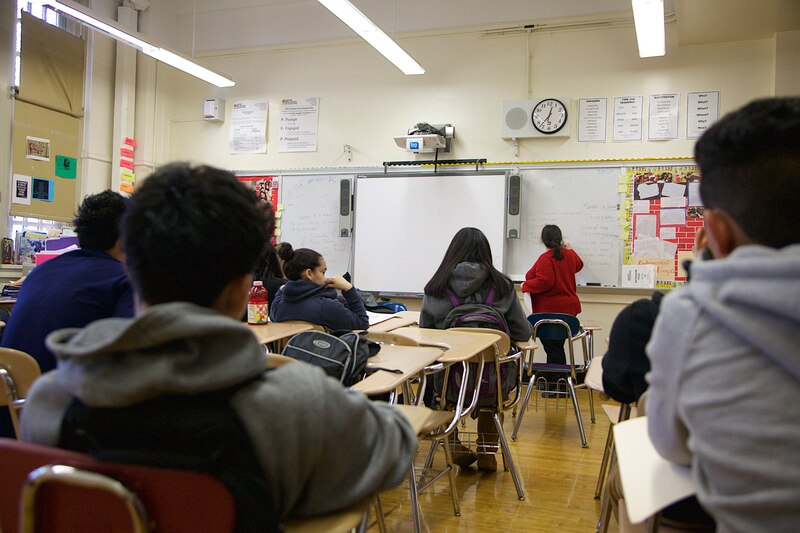
Plan for English Language Learners
More than 150,000 NYC students, or 15%, are designated as English Language Learners.
Dianne Morales
Beyond saying she will “do everything in [her] power to see that” English language learners get the resources they need, Morales has not specifically addressed English language learners, or ELLs, in her platform.
Scott Stringer
Stringer says in his education plan that he would address chronic shortages in special education for ELLs through a teacher residency program to recruit and train educators to work in areas of the most significant need, including teaching English as a New Language. He would also expand “effective” dual language and bilingual programs in neighborhoods with high numbers of ELLs and focus on connecting immigrant youth in danger of dropping out with transfer schools that typically serve over-age but under-credited students.
Ray McGuire
McGuire’s campaign told Chalkbeat he would expand bilingual education, emphasizing programs for older students. He would pilot multilingual Family Centers to help parents navigate the school application process and access such resources as tutoring programs, college counseling, and adult literacy and high school equivalency programs.
Maya Wiley
For multilingual learners, Wiley would ensure school-related documents are in a family’s home language, expand dual language or transitional bilingual programs, and create additional programs for such high schoolers, such as night school to address high dropout rates among this group.
Kathryn Garcia
Garcia would leverage NYC Student Accounts and other forms of technology to make sure that parents have access to information in their preferred language. Her plan also states that she would invest in “high quality English language programs” for bilingual students.
Eric Adams
Adams recognizes that NYC is not an English-only city, and he is committed to hiring more bilingual educators and aides, particularly for the roughly 4,000 students who require bilingual special education. Adams would also create a professional development program to ensure teachers are responsive to ELL students. “Teachers will be trained in how to adapt to the cultural perspectives their students may bring to the classroom, ensuring that students from all backgrounds are given an equal opportunity to succeed,” Adams’ platform states.
Shaun Donovan
Donovan’s plan addresses the 40% of New York City public school students who speak a language other than English at home by calling for universal language access. Families would receive communication from schools in their preferred language. He would also invest in more high-quality English as a New Language and bilingual programs and create pipelines for more bilingual New Yorkers to become teachers and school leaders.
Andrew Yang
Yang would establish an Opportunity Fund, which would provide $1,000 a year to each family of a student designated as ELL. The funds, which would also be available to students with disabilities and those from low-income families, could be used for educational services such as music or art lessons, or speech therapy sessions.
Plan for students with disabilities
More than 200,000 students, or 20%, are classified as having disabilities that legally entitle them to receive special services in school. About 25,000 of these students who require more intensive support are in District 75, which exclusively serves students with special needs.
Dianne Morales
Morales adopted City Council District 5 candidate Rebecca Lamorte’s Disability Justice and Accessibility platform, which calls for increased funding for students with disabilities and integrating District 75 schools into more communities, meaning more students with disabilities would have the option to mix with general education students. The plan also includes expanding restorative justice practices in place of carceral-style punishment, which disproportionately affects District 75 students. In addition, Morales would create a new division at the Mayor’s Office for people with disabilities to connect with public services.
Scott Stringer
Stringer has a history of advocating for the rights of students with special needs. For example, as comptroller, he called on the education department to fix the Special Education Student Information System, used to track the special needs of the more than 200,000 NYC students with disabilities. As mayor, Stringer would “address chronic shortages in special education,” particularly in regards to bilingual students with disabilities, and he would expand programs that serve children with autism, such as ASD Nest and Horizon, into historically marginalized communities.
Ray McGuire
McGuire would focus on expanding the NYC Nurse-Family Partnership, through which pregnant and new mothers receive visits from a nurse who can help identify children with special needs. McGuire would create a 24/7 telehealth program that new mothers would learn about at their hospital or birthing center. He would also direct the Chancellor to develop a systematic method of evaluating Individualized Education Programs (IEPs), a federally mandated document that details the supports a child with special needs requires to thrive in school.
Maya Wiley
For students with IEPs, Wiley would ensure they receive their legally mandated services. She wants to expand specialized programs such as ASD Nest and Horizon, which work with children on the autism spectrum. She also pledged to develop new models to meet instructional gaps, including for students with ADHD, dyslexia, and those with twice exceptional needs (meaning they have high cognition in addition to learning challenges). She also promised to prioritize underserved communities, such as the Bronx, where 24% of students with IEPs attend school, even though the borough receives only 14% of funding for programs like Nest and Horizon that target students with disabilities.
Kathryn Garcia
Garcia would expand access to service providers so families do not have to travel outside of their neighborhoods for support. She would also implement universal screening for dyslexia.
Eric Adams
Adams would prioritize real-time tracking to measure which students with disabilities are not receiving all of their services so that those situations could be addressed before the year is over. Adams said he would hire more bilingual special education teachers to address chronic gaps. He would also make dyslexia screenings universal.
Shaun Donovan
Students with disabilities have been disproportionately affected by COVID, which Donovan plans to address by investing in new Student Success programs. The program would offer grants to schools working to accelerate learning for vulnerable students, including those with disabilities. Donovan also believes educators should be trained in alternatives to disciplinary actions, which disproportionately impact students with disabilities. Finally, Donovan would address racial disparities in special education screening by reviewing current screening tests for sources of bias and by requiring implicit bias training for staff.
Andrew Yang
Yang promises to place disability rights activists in high-level positions within the city’s education department. He supports proposals from Advocates for Children to create a corps of specialized staff that could be deployed to schools to serve students with disabilities. Such a team could allow more students with disabilities to learn in a general education setting. Yang would also establish an Opportunity Fund, which would provide $1,000 a year to each family of a student with an IEP or who has been designated as ELL. Students in families that are at the poverty threshold would also qualify. Yang estimates that this would cost $500 million, which he would fund through federal aid.
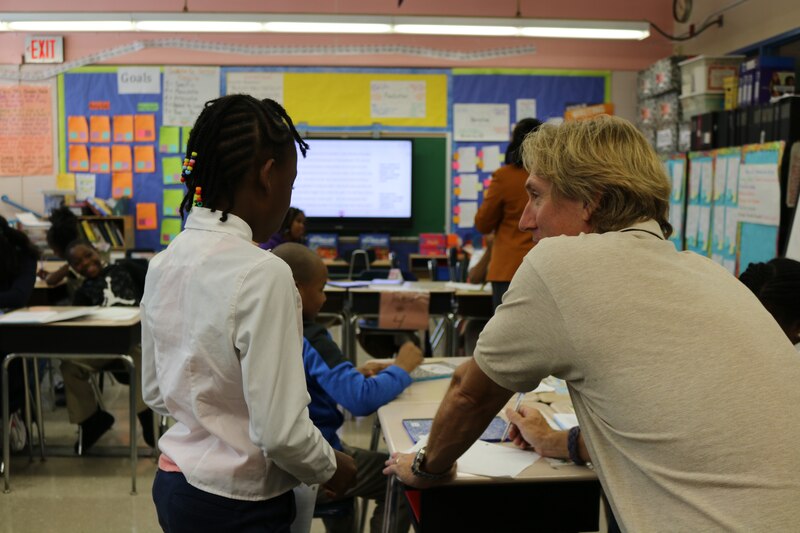
Plan for students in temporary housing
Roughly one in 10 students in NYC are homeless or live in temporary housing.
Dianne Morales
Morales would invest in community-based organizations that provide wraparound services. She would ensure access to universal after-school programs, especially for students in foster care and those from low-income families.
Scott Stringer
As a New York State Assemblyman, Stringer previously fought for additional resources for homeless students. As mayor, he would create an interagency office to ensure students experiencing homelessness and those living in foster care get the support they need. He would also guarantee each student has free, high-speed internet access.
Ray McGuire
McGuire vastly underestimated the number of New York City students who are homeless or living in temporary housing in an interview with the New York Times. But in an email statement to Chalkbeat, he said he would hire additional counselors to serve students experiencing homelessness. He also said he would partner with nonprofits to expand after-school activities.
Maya Wiley
Wiley would create an office in the education department to address the needs of students who are in temporary housing or foster care. She would launch an interagency initiative that looks at the education barriers these students face, including busing and social services at shelters.
Kathryn Garcia
Garcia would expand support for the 140 NYC schools where more than 20% of students are homeless by providing wraparound supports. These services would include adult literacy courses, health clinics, and practical supports like access to a washer and dryer.
Eric Adams
For youth in the foster care system, Adams would develop a mentorship program while also investing in employment programs. And to help homeless students, he has committed to ensuring high-speed internet access in every homeless shelter.
Shaun Donovan
Donovan suggests creating senior leadership positions within the Mayor’s Office and the education department to oversee the needs of students in temporary housing. He also seeks to improve continuity in education for students in temporary housing. While federal law requires families to be placed in a shelter closest to their youngest child’s schools, this only occurs 50% of the time. Donovan’s plan calls for hiring 150 additional social workers to work in schools with large numbers of students in temporary housing. Donovan would also prioritize these schools for Community Schools efforts and wraparound services.
Andrew Yang
Yang would create a cross-functional task force to address educational barriers facing students experiencing homelessness and those in foster care. This task force would work to ensure families are placed in shelters as close as possible to their children’s schools and increase the number of staff dedicated to serving homeless students. Yang would also support children aging out of the foster care system by investing in Fair Futures.
Reema Amin, Christina Veiga, Amy Zimmer, and Alex Zimmerman contributed.


